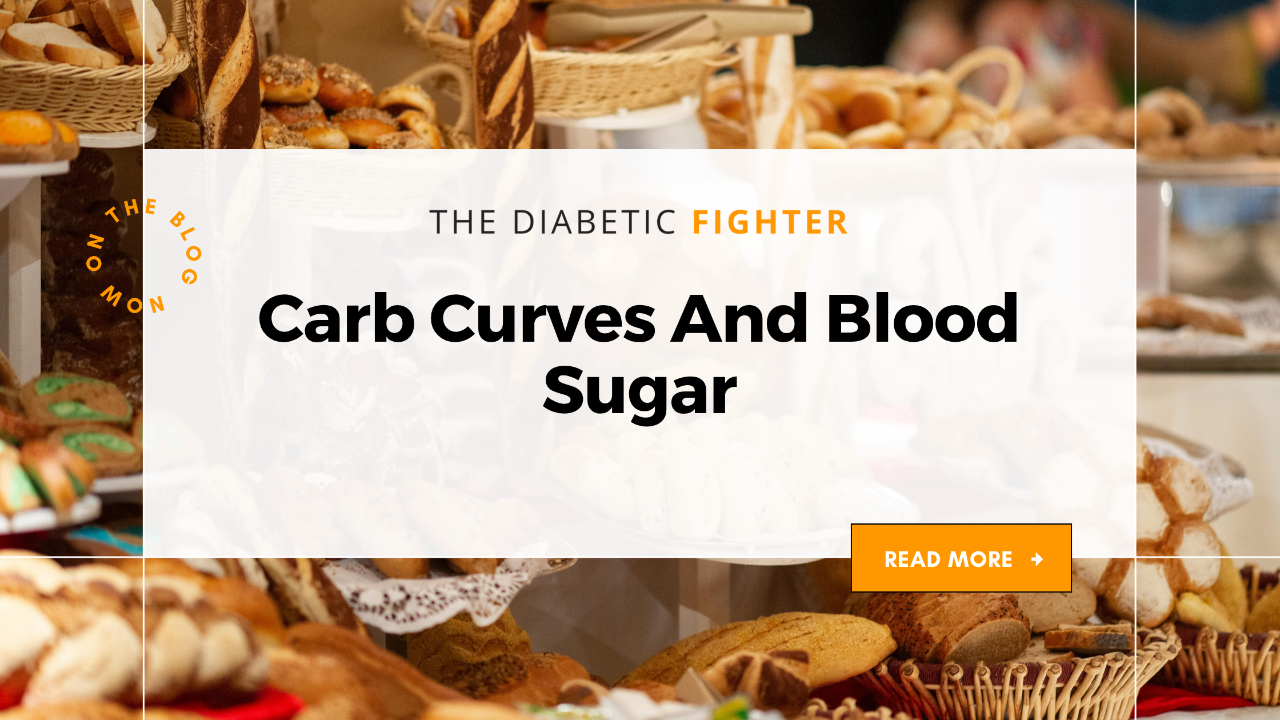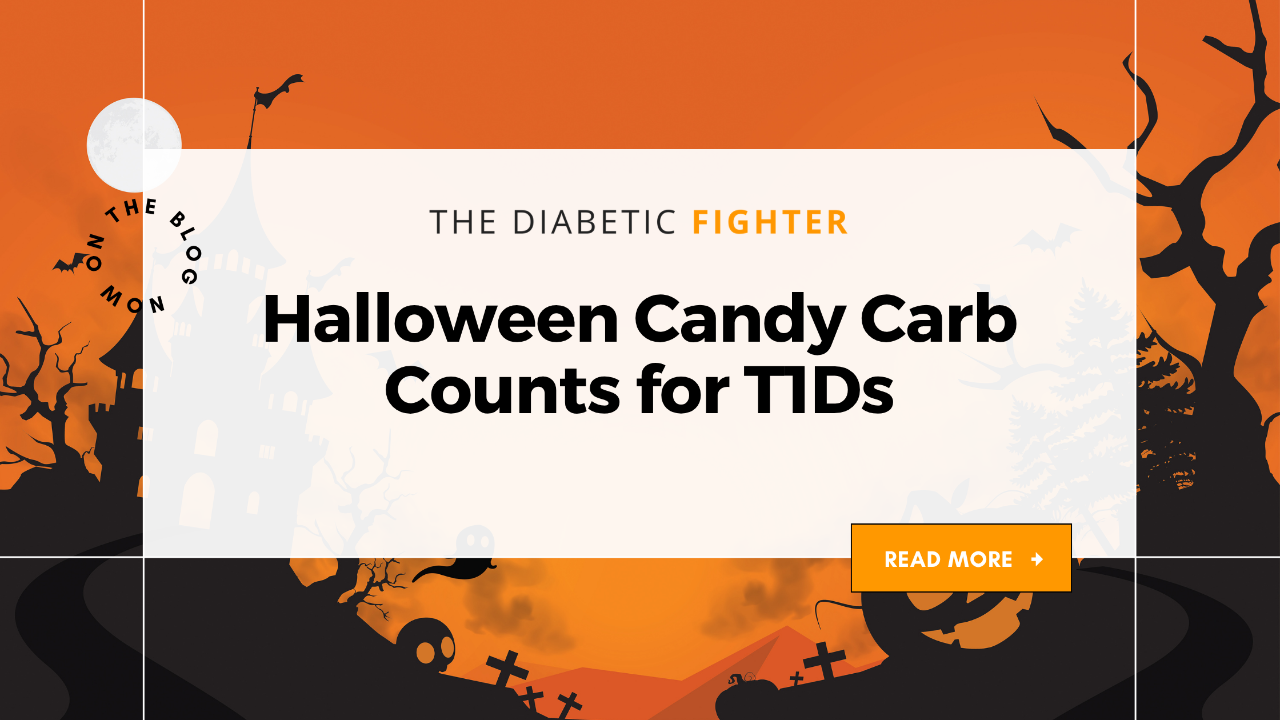Carb Curves and Blood Sugar: How Different Foods Change Your Glucose Response

Not all carbs hit your blood sugar the same way. And not all spikes are created equal.
Some foods raise your glucose fast, some raise it slowly, and others barely move it at all. These patterns are known as carb curves, and they explain why certain meals send you soaring while others feel steady and predictable.
Understanding these curves can dramatically improve your control if you live with Type 1 diabetes, Type 2 diabetes, prediabetes, or even if you have no diagnosis and simply want better energy, fewer crashes, and more balanced hunger.
Let’s break down each curve in a simple and clear way.
Sugar: The Sharpest and Fastest Rise
Sugar creates the strongest and quickest response of any carb source.
What happens in your body:
-
Absorbs almost immediately
-
Produces the highest peak
-
Drops off quickly
For Type 1 diabetics:
You will need a rapid and well-timed bolus if sugar is part of your meal.
For Type 2 diabetics:
Sugar can overwhelm insulin resistance and ca...
Halloween Candy Carb Counts for T1Ds

Wondering how many carbs are hiding in your favorite Halloween treats?
If you’re living with Type 1 diabetes, Halloween can be tricky when it comes to managing blood sugar. The good news is, you don’t have to skip the candy to stay in range. With a little awareness and planning, you can enjoy the night without the spikes. Here’s your quick guide to the carb counts in popular Halloween candies, chips, and snacks, so you can bolus smart and keep your blood sugar steady.
Chocolate Favorites
-
Snickers (Fun Size): 10 g
-
Reese’s Cup (Mini): 5 g
-
Kit Kat (Fun Size): 10 g
-
Twix (Fun Size): 10 g
-
M&M’s (Fun Size): 13 g
-
Milky Way (Fun Size): 12 g
-
3 Musketeers (Fun Size): 12 g
-
Butterfinger (Fun Size): 10 g
-
Crunch Bar (Fun Size): 7 g
-
Almond Joy (Fun Size): 10 g
Fruity & Sour Favorites
-
Skittles (Fun Size): 14 g
-
Starburst (2 pieces): 8 g
-
Sour Patch Kids (Mini): 12 g
-
Swedish Fish (Mini): 11 g
-
Nerds (Mini Box): 11 g
-
Laff
...
The Truth About Weight Loss with Type 1 Diabetes

If you live with Type 1 Diabetes, you already know that losing weight is not as simple as “eat less and move more.” You can be doing everything right and still feel like the scale will not budge. The truth is, your blood sugar plays a massive role in how your body burns fat, builds muscle, and uses the food you eat.
When blood sugar stays high for long periods of time, your body cannot use nutrients properly. Insulin is what moves fuel into your cells, and when glucose levels are elevated, that process gets disrupted. Even if you are eating enough protein, your muscles may not be getting what they need to repair and grow. Over time, that means less lean muscle and a slower metabolism.
Then there is the other side of the coin: frequent lows. You treat a low, you eat something extra, and sometimes you overcorrect. Those quick fixes add up to hundreds of calories that your body did not plan for. If that becomes a pattern, it can make fat loss almost impossible, even if your meals are mo...
How to Train Your Dog to Alert You for Low Blood Sugar

If you’ve ever had a low sneak up on you, you know how scary that can be. What if your dog could help warn you before it hits? The truth is, they probably can.
Dogs have an incredible sense of smell. In fact, they can detect changes in your body chemistry long before you’re even aware something’s wrong. That includes the subtle shifts that happen when your blood sugar drops. This is why medical scent detection dogs are trained to alert their owners to highs or lows. But you don’t need to hire a service dog trainer or spend thousands of dollars. You can start this training at home with something as simple as a cotton ball and your own saliva.
Here’s how to get started.
Step 1: Collect a Scent Sample During a Hypo
The next time you’re having a low, place a clean cotton ball in your mouth for 20 to 30 seconds. What you’re doing is soaking it in saliva that contains the unique chemical signals released during hypoglycemia. These signals are what your dog will eventually learn to recogn...
How to Avoid Blood Sugar Chaos While Traveling With T1D

Traveling can be exciting, but for those living with Type 1 Diabetes, it can also be a blood sugar rollercoaster. From long airport walks to changing time zones, unpredictable meals, and extreme heat, your routine can get thrown off fast. The good news is, with the right plan, you can enjoy your trip and stay in range.
Here are the top strategies to avoid travel-induced blood sugar chaos.
1. Adjust for Time Zone Changes
If you're crossing time zones, your basal insulin timing will need to shift.
-
Traveling east means your day shortens, so you may need to take your insulin earlier.
-
Traveling west means your day gets longer, so delay your dose slightly. Plan ahead by gradually adjusting your dosing time a day or two before your flight.
2. Lower Insulin Before the Airport
Airports involve a lot more walking than most of us realize. Security lines, terminals, and last-minute gate changes can lead to unexpected lows.
Consider reducing your bolus insulin or setting a tempora...
How to Do a Fasting Basal Test (for Type 1 Diabetes)

If your blood sugar is rising or falling when you have not eaten, exercised, or taken bolus insulin, the most likely issue is your basal insulin. A fasting basal test is a simple but powerful way to determine whether your background insulin is holding your blood sugar steady.
In this guide, you will learn how to properly test your basal insulin and identify whether adjustments are needed.
What Is a Fasting Basal Test?
A fasting basal test helps you isolate and evaluate your long-acting insulin. This could be a daily injection such as Lantus, Levemir, or Tresiba, or a basal rate programmed into an insulin pump.
The goal is to determine whether your blood sugar stays stable during periods when food, bolus insulin, and exercise are not influencing it. If your blood sugar remains flat, your basal insulin is likely set correctly. If it rises or falls consistently, your dose or timing may need to be adjusted.
Step-by-Step Instructions
Step 1: Choose a Time Block
Select one time period...
6 Nutrition Tips for Better Blood Sugar Control

Managing blood sugar with diabetes can often feel like walking a tightrope. But there are clear, actionable strategies that can make that walk a lot more stable. As a nutrition coach, these are the same tips I use with my clients to help them minimize blood sugar swings, reduce frustration, and gain better day-to-day control.
Below are six foundational nutrition principles that support blood sugar stability grounded in science, not fads.
1. Focus on Protein First
Protein helps slow digestion, promotes satiety, and blunts post-meal glucose spikes. By building meals around high-quality protein sources like turkey, chicken, fish, eggs, tofu, or lean beef you’re setting a more stable foundation for your blood sugar response.
Sources:
-
Wolfe RR. (2012). The role of dietary protein in optimizing muscle mass and health outcomes. British Journal of Nutrition.
-
Gannon MC, Nuttall FQ. (2004). Effect of a high-protein diet on blood glucose control. Diabetes.
2. Break Up With Star...
Best Breakfast for Diabetics: Why Starting Your Day with Fats and Protein Is a Game Changer

If you’re trying to get better control of your blood sugars, let’s talk about something simple that makes a big impact. Breakfast.
I’m not talking about cereal, toast, or fruit smoothies here. I’m talking fats and protein first thing in the morning. It sets the tone for your blood sugars all day long. And no, this isn’t just a bro science tip. It’s backed by actual research.
The Science
There’s a study from The Journal of Nutrition that looked at how people with Type 2 diabetes responded to high protein versus high carb breakfasts. The protein-packed meals came out on top. They helped keep post-meal blood sugars lower than the carb-heavy ones.
https://pubmed.ncbi.nlm.nih.gov/25733459/
Another study in the journal Obesity found that people who ate a bigger breakfast with more protein and fat actually had better A1C numbers over time.
https://pubmed.ncbi.nlm.nih.gov/24311451/
Why Fats and Protein Work
Carbs break down into sugar. Protein and fat do not. When you start the day wi...
Before You Hire a Health Coach, Read This

If you’re considering hiring a health coach, you want to make sure you’re making the right investment. A good coach can help you achieve your goals faster, provide accountability, and offer expert guidance. But not all coaches are created equal. Before committing, here are eight essential qualities to look for in a health coach.
1. A Proven Track Record of Results and Reviews
The best way to gauge a coach’s effectiveness is by looking at their past results. Do they have client testimonials? Before-and-after success stories? Consistent positive feedback? A great coach will have real-world evidence of their ability to help others succeed.
2. A Clear Game Plan or Program
A solid health coach should offer a structured plan that aligns with your goals. Whether you’re managing diabetes, trying to lose weight, or building muscle, you need a roadmap that is tailored to your needs. Avoid coaches who rely on vague advice without a clear step-by-step process.
3. A Personality Fit
Coaching i...
11 Powerful Tips to Smash Your 2025 Health Goals

As we step into a new year, it’s the perfect time to refocus on your health goals and create sustainable habits. Whether you’re striving to lose weight, lower A1c, boost your energy, or simply feel your best, these practical tips will help you crush your goals in 2025. Let’s dive in!
1. Start Your Day Right with Protein and Healthy Fats
Breakfast sets the tone for your day. Instead of sugary cereals or pastries, opt for a meal rich in protein and healthy fats. Think eggs, avocado, sugar-free Greek yogurt, and nuts. These foods provide steady blood sugar, energy, reduce cravings, and keep you feeling fuller longer.
2. Hydrate Wisely
What you drink matters just as much as what you eat. Stick to zero-calorie beverages like water, sparkling water, black coffee, or unsweetened tea. Sugary drinks, even those marketed as “healthy,” can sabotage your progress by adding unnecessary calories and spiking your blood sugar. Pro tip: Add lemon, cucumber, or mint to your water for extra flavor wi...

